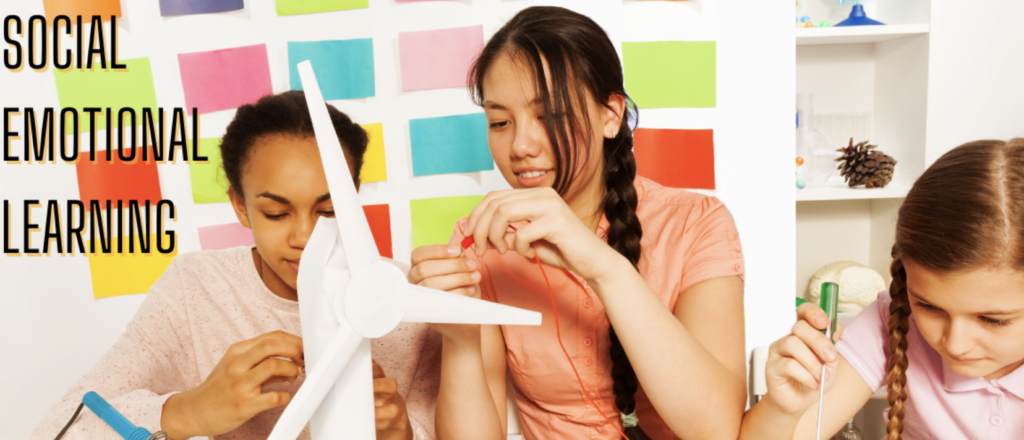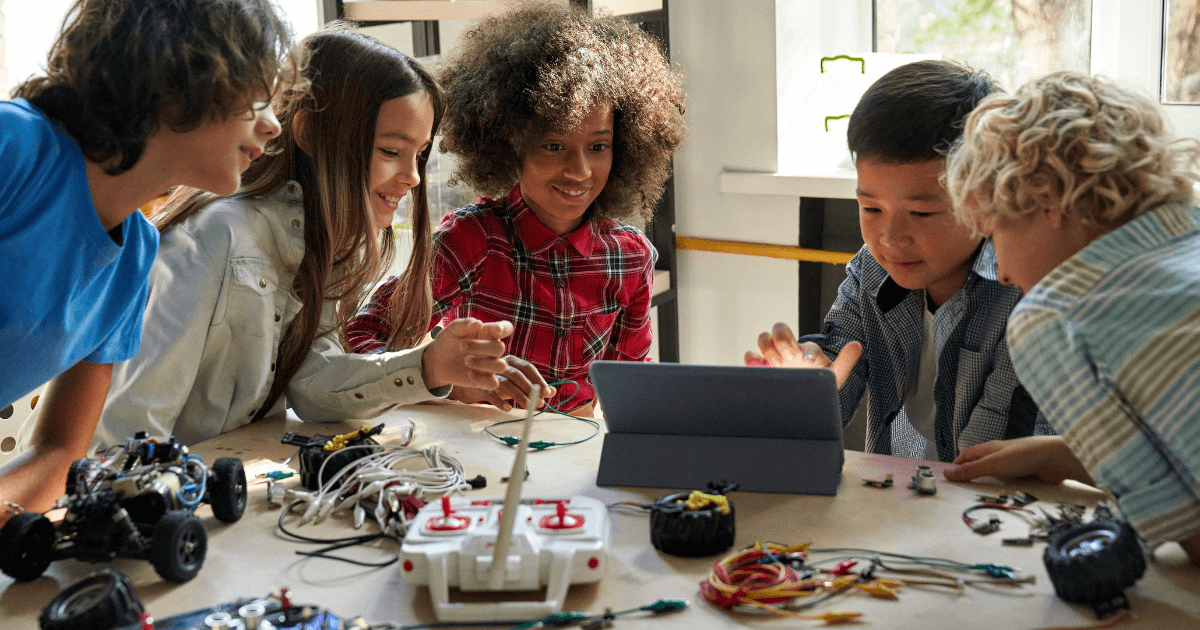Social-emotional learning, often referred to as SEL, is a big focus for many school leaders and classroom teachers—especially in the last three years. For them, this importance of strong student mental health and emotional balance is huge in student development and success. In fact, SEL has become so important in education that some school and district leaders have created new positions and hired extra people to help ensure strong mental health for educators and students. And, many education professionals agree this is a worthwhile cause. There are, however, many ways to go about addressing social-emotional learning for kids. One of those ways—a method with proven success—is connecting SEL and maker education.
Social-emotional learning is a process—and arguably one that kids will never fully complete. Educators can always help with enhancing those central emotional competencies, however, through purposeful, hands-on experiences in the classroom. As such, targeted social-emotional learning lessons and programs can help students both academically and interpersonally. They'll also help them to obtain specific knowledge, reflect on new attitudes, and discover valuable skills they can use to connect with peers, better manage their own emotions, apply to pursuing their academic and personal goals, and get the most out of relationships.
Why social-emotional learning matters.
Developing a strong social-emotional core can help children learn to work cooperatively, request help, and make responsible decisions. This includes in both their personal lives and any educational endeavors. With much more of a focus on mental health these days, social-emotional classes and programs are much more common in schools. At the very least, many educators are now adding SEL elements to their curricula to supplement lessons and strengthen relationships. While it wasn't impossible to maintain social-emotional health during the remote learning era, it was certainly more difficult. Factor in any traumas from this time and social-emotional learning activities remain vital as we continue with normal classroom interactions.
In their efforts to reach kids on a more emotional level, many educators have had success in using STEAM tools in conjunction with teaching them about social and emotional learning. At first, this might seem like a roundabout approach but, in reality, hands-on learning elicits a lot of emotions—especially with the young kids. When programming a robot, for example, children might experience genuine excitement when seeing code that they created come to life. They can then continue chasing this feeling since it provides them with such strong connections to their school work. It can also inspire increased creativity, perseverance, and a desire to achieve goals—all indicators of strong social-emotional health.
Learning with hands-on tools also helps students recognize their strengths, build their self-confidence, and develop their self-efficacy. Once they begin to understand their top strengths, they can then focus more on developing them further. Plus, they will start realizing that it's okay to ask for help—something that can also contribute to greater self-awareness, which is one of the core pillars of SEL. Also, if any of their classmates is struggling with a programming project, for example, educators could use this opportunity to teach about empathy and working together to solve problems. The best part is that most social-emotional lessons are relevant in all grade levels and across academic subjects.
Since STEAM tools are largely collaborative, they certainly create a lot of opportunities for students to learn together. In turn, this gives them many opportunities to work on building connections. Building connections involves a larger social-emotional aspect, including learning how to communicate effectively, engaging with peers, working cooperatively, resolving conflicts, and asking for and offering help. Coding, specifically, may often require just about all of these elements for students to team up and write a program successfully. The same can also be said for constructing something in a makerspace.
How SEL helps outside of academics.
Other elements of SEL that teachers can bring to life with maker education include self-management and responsible decision making. Within each of these categories of SEL development, there are a handful of subcategories educators might want to focus on. When they're teaching about the important parts of self-management, for example, educators might hammer home how a due date is coming up—and will not be changing unless something drastic happens.

Deadlines, of course, are a huge part of the real world and an equally important component of education. Students might stress out as it inches closer but this is an opportunity for them to learn self-management skills. By exercising self-discipline, they can spend more time on any given project. When exercising self-motivation, they can be sure they complete certain parts of the project before relaxing. In exercising goal setting, they can increase the likelihood that these projects meet certain expectations. And, by exercising organization, they can make sure they meet all of their due dates. All of these elements contribute to why social-emotional learning matters so much and help students build stronger self-management skills.
Other elements of SEL in action.
Another element—responsible decision-making—can come into play in a variety of ways. Maybe there's a student thinking about copying or plagiarizing their next assignment, for example. This can present another social-emotional learning opportunity for them. Educators can reinforce the importance of identifying which problem led them to consider this, analyzing that situation as a whole, and then coming up with a healthier solution—the same way problem solving works in the real world. Once they complete a project, kids could then evaluate themselves and their work. This also gives them a chance to reflect on how they can improve and consider ethical implications of their actions.
You might not have realized so many elements of SEL could go into maker education but they are a big factor. Whether it’s in enhancing self-awareness, social awareness, relationship skills, decision making, or self-management, the five core competencies of SEL fit right into hands-on STEM learning and MakerEd. To learn more about SEL in education and incorporating it into your instruction, follow us on Twitter and Instagram. Also, feel free to click below to get in touch with us if you’d like to explore the topic further.




